The Atlantic Sharpnose Shark (Rhizoprionodon terraenovae) is a small species of requiem shark found in the western Atlantic Ocean. It prefers shallow waters and can be seen close to shore, particularly along beaches.
Let’s dive into the depths of knowledge about Atlantic sharpnose sharks. In this article, I will explore their anatomy and uncover some incredible facts that may surprise you!
Chart about Atlantic Shapnose Shark
| Factor | Information |
| Common Name | Atlantic Sharpnose Shark |
| Scientific Name | Rhizoprionodon terraenovae |
| Family | Carcharhinidae |
| Other Names | Sharpnose, sharpnose shark, sharp-nose shark, snook shark |
| Size | Up to 3 feet |
| Weight | 7.25 kg (16 pounds) |
| Coloration | Grey to olive-brown on the back, white on the underside |
| Physical Characteristics | Slender body, pointed snout, long, narrow, curved teeth |
| Habitat | Warm temperate and tropical waters in the western Atlantic Ocean, from Rhode Island to Brazil |
| Range | Western Atlantic Ocean, from Rhode Island to Brazil |
| Diet | Small fish, squid, shrimp, crabs, and other small invertebrates |
| Predators | Larger sharks, dolphins, other marine mammals, and humans |
| Reproduction | Viviparous (gives birth to live young), with litters of 4 to 7 pups |
| Conservation Status | Least Concern (IUCN Red List) |
| Interesting Facts | Atlantic sharpnose sharks are known to leap out of the water when hooked by fishermen, and their meat is considered of low commercial value. |
Detail Discussion about Atlantic Sharpnose Shark
The Atlantic sharpnose shark (Rhizoprionodon terraenovae) is a species of requiem shark, part of the family Carcharhinidae.
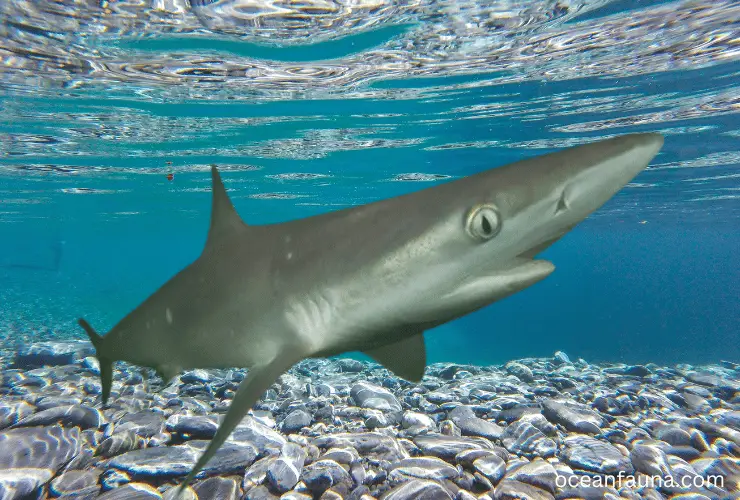
It has a cosmopolitan distribution in tropical and warmer temperate seas worldwide, ranging from the eastern coast of North America to South Africa and as far east as Japan. They inhabit inshore waters such as bays, estuaries, and lagoons, as well as offshore waters near continental shelves and oceanic islands.
These sharks have slim, fusiform bodies with pointy snouts, which gives them their name. They are usually grayish brown on the back and pale underneath. The fins are small compared to other carcharhinids. The size of this species is around 2-3 feet.
Atlantic sharpnose sharks chiefly eat herring and anchovies, yet they will also munch on fish, shrimp, worms, or crabs when possible. They are viviparous, meaning that young are born live, with each female giving birth to up to 4-7 pups after a gestation period of about 10-11 months.
These sharks are considered harmless to humans due to their small size and shy nature. However, they can become aggressive if disturbed or provoked.
Atlantic sharpnose sharks have been used for food by some cultures throughout history. Still, today they only make up a small portion of targeted fisheries catches due to their low abundance and restricted habitat range.
Why Atlantic Sharpnose Shark Is Called “Sharpnose Shark”?
The Atlantic sharpnose shark gets its name from its long, pointy snout. The snout of the Atlantic sharpnose shark is longer than that of other sharks, giving it a more pointed look and hence the name “sharpnose.”
The snout also has a distinct shape which helps them to detect prey more quickly and easily due to their heightened sense of smell. This gives them an advantage over other species when it comes to finding food.
Moreover, the pointed shape of their snout also helps them swim through narrow passages in search of food with greater ease compared to other species.
In addition, the sleek body of the Atlantic sharpnose shark makes it well-suited for surviving in shallow waters, as it can efficiently cut through currents or waves.
Fun Facts: Atlantic Sharpnose Shark
- Atlantic Sharpnose Sharks are very common in the Western Atlantic Ocean and the Gulf of Mexico.
- They are typically found in shallow coastal waters but have been known to venture into deeper waters.
- These sharks can grow up to 3 feet in length and weigh up to 7.25 kg (16 pounds).
- They have a lifespan of around 9-12 years.
- Atlantic Sharpnose Sharks are not considered a significant threat to humans.
- These sharks are opportunistic feeders and will eat a variety of small fish, crustaceans, and squid.
- They are known to be migratory, with populations moving to different areas during different seasons.
- The IUCN lists the Atlantic Sharpnose Shark as a species of Least Concern, meaning that their populations are currently stable.
- These sharks are commonly caught for sport and commercial fishing but are also used for their meat and oil.
- The Atlantic Sharpnose Shark is named for its sharply pointed snout, which helps it to sense prey in the water.
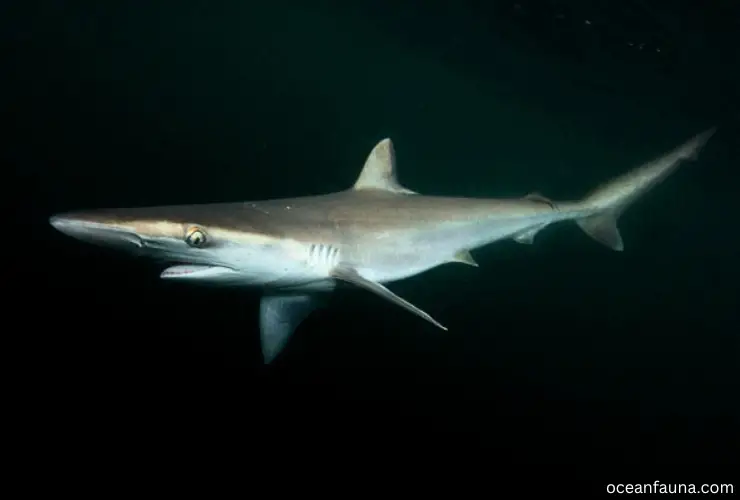
Anatomy of Atlantic Sharpnose Shark
Skeletal System
Like other sharks, the Atlantic sharpnose shark possesses a cartilaginous skeleton comprising a series of thin layers of cartilage tissue. The cartilage provides support and shape to the body and flexibility and resilience to the joints.
The skull is made up of several pairs of flattened and triangular jaw bones, which are fused together. These bones form structures that allow the jaw to open wide when hunting prey.
In addition, several sets of dermal denticles or “skin teeth” on the body aid in protection from predators and abrasion from rough surfaces.
Respiratory System
The respiratory system of the Atlantic sharpnose shark consists primarily of its two-gill slits, which are connected to an internal set of gills that contain a network of blood vessels and capillaries used for respiration. This allows them to take oxygen directly from the water they swim through instead of having to rely on air like terrestrial animals do.
Additionally, they have an accessory breathing organ called a spiracle located behind each eye that helps increase their efficiency while swimming by allowing them to uptake oxygen more efficiently when necessary.
Circulatory System
The Atlantic sharpnose shark’s circulatory system is mostly composed of its two-chambered heart, arteries, veins, and capillaries, which carry oxygenated blood all over its body.
They also have ways to control their blood temperature, such as counter-current heat exchangers in their heads that help keep their body temperature stable even when the water temperature outside changes. Because of this, they can be good predators in both warm and cold water.
Digestive System
An Atlantic sharpnose shark’s digestive system comprises four organs: the oesophagus, the stomach, the intestines, and the anus. It starts by grabbing its prey with small teeth on the edges of its jaws. Since it doesn’t have molars or other special teeth for chewing food into smaller pieces first, it must swallow its whole food.
Inside its stomach, acid breaks down any food it eats until it can move on to the small intestine, where nutrients are absorbed, and then out through its anus as waste, along with bile made by its liver to help with digestion.
Nervous System
The Atlantic sharpnose shark’s nervous system is mostly comprised of a complex network made up of many different parts, such as the brain, spinal cord, nerves, and sensory organs like the eyes, nose, and lateral line systems, which help the shark find its way around by detecting changes in water pressure.
All of these things work together automatically, letting them react to environmental changes even faster than other fish species. This gives them an advantage when hunting for food or trying to get away from predators.
What Do Atlantic Shapnose Sharks Eat?
Atlantic sharpnose sharks are opportunistic predators, meaning that they feed on a variety of different prey. They typically feed on small bony fishes such as herring, menhaden, anchovies, sardines, and hagfish.
They also feed on invertebrates like squid and octopus and crustaceans such as shrimp and crabs. Since these sharks are relatively small (averaging about 36 inches in length), their diet mainly consists of smaller fish species that are not capable of fighting off predators.
Atlantic sharpnose sharks hunt using their keen eyesight to spot potential prey from a distance. Once they have identified an attractive prey item, they quickly swim towards it at speeds of 5-10 miles per hour with their mouths wide open ready to snap up the unsuspecting victim.
Depending on the size of the prey item, the Atlantic sharp nose shark may use its powerful jaws to crush shells or tear flesh before swallowing it whole. Large prey items may require several bites before being consumed completely.
After consuming their meal, Atlantic sharpnose sharks can often be seen swimming lazily back and forth in search of more food or simply resting until they’re ready to hunt again.
What Are The Predators of the Atlantic Sharpnose Shark?
The main predators of the Atlantic sharpnose shark are larger sharks such as tiger sharks, bull sharks, and lemon sharks. These apex predators have powerful jaws and razor-sharp teeth that they use to hunt the smaller Atlantic sharpnose shark.
Other predators include larger fish, such as mackerels and jackfish, as well as dolphins, whales, and sea turtles.
Human activity also threatens Atlantic sharpnose sharks; these animals are sometimes caught as bycatch in fishing nets or targeted for their meat sold commercially in some countries.
Conservation efforts are being made to protect the Atlantic sharpnose shark from overfishing so that future generations can continue to observe and admire these amazing creatures.
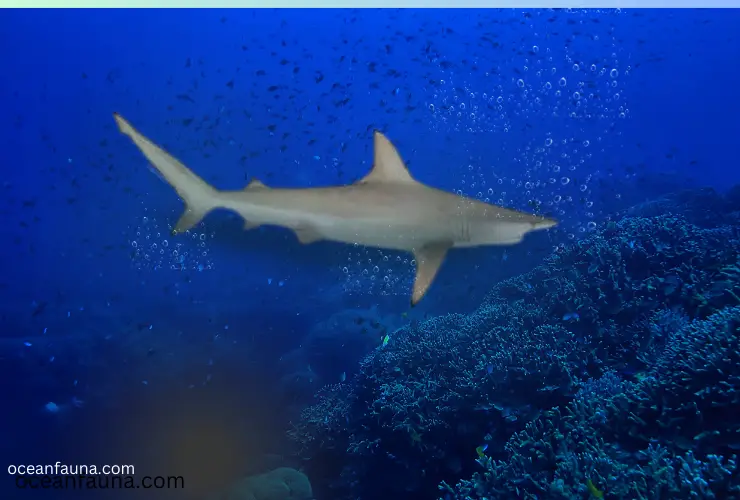
Where Do Atlantic Sharpnose Sharks Live?
Atlantic sharpnose sharks live in shallow coastal waters, lagoons, and estuaries with low salinity levels, making them a common resident of the western Atlantic.
They are commonly found from New Brunswick, Canada, to the Gulf of Mexico and along the East Coast of the United States from Virginia to Texas. Sharpnose sharks prefer warm temperatures between 68-86°F (20-30°C).
These sharks are often found in areas with hard substrates such as sand, gravel, or rubble, which they use as shelter during the day, while they feed at night in nearby waters.
These sharks prefer to live near shorelines where abundant food sources can be found, such as small fish, crustaceans, and mollusks, as well as other bottom-dwelling animals like squid and octopus.
Because they prefer shallow waters close to shorelines, Atlantic sharpnose sharks are more vulnerable to human activities such as fishing and habitat degradation than other species of shark. Despite this vulnerability, these sharks have adapted to living closer to human populations over time than many other species.
How Long Does an Atlantic Sharpnose Shark Live?
The average lifespan for an Atlantic sharpnose shark is around 9-12 years. This species is known to be quite resilient, able to survive in a variety of habitats, and tolerate different water temperatures.
They typically reach maturity between 3-7 years old, although some individuals have been known to live up to 16 years in the wild. The maximum age of the Atlantic sharpnose has been recorded at 23 years old.
How Do Atlantic Sharpnose Sharks Reproduce? (Viviparous)
Atlantic Sharpnose sharks reproduce by internal fertilization. The females produce 4-7 live young, called pups, after a 10-11 month gestation period. Before giving birth, the female sharks move inshore to shallow waters and may form large mating aggregations with the males.
During mating, the male inserts one or both of his claspers into the female’s reproductive tract. This is how he transfers his sperm to her for fertilization.
After mating, the female is left to carry out her pregnancy alone, as the male leaves shortly afterward. This behavior of sexual segregation is also observed during migrations when these sharks travel offshore in winter and return inshore in spring for mating season.
At birth, Atlantic Sharpnose shark pups measure 11.4-14.6 inches (29-37 cm). During their first three months of life, they grow an average of 2 inches (5 cm) per month until reaching full size at 1.5–2 years old, which is approximately 30–38 inches (76–97 cm) long for females and 27–30 inches (68–76 cm) long for males.
Are Atlantic Sharpnose Sharks Aggressive to Humans?
No, Atlantic Sharpnose Sharks are not typically aggressive toward humans. While sharks of any species may become aggressive if provoked or threatened, this is not the norm for Atlantic Sharpnose Sharks. This shark species is a smaller species seen around shorelines but generally poses no threat to humans.
Regarding interactions with humans, Atlantic Sharpnose Sharks have been known to show curiosity when approached by divers and fishermen but do not pose any real threat to people. In fact, many divers actually enjoy swimming with these curious creatures. They will swim away when scared or disturbed and are not considered a danger to humans.
However, human poachers remain a threat to the Atlantic Sharpnose Shark and other species of sharks. The meat, fins, and liver are valuable commodities in some countries, and these sharks are still poached for their parts.
What Is Atlantic Sharpnose Shark Used for?
The Atlantic sharpnose shark is a small coastal species of shark that is commonly used for its meat. It is a highly sought-after species due to its firm texture, mild flavor, and low price. Not only is the meat of this shark sold for human consumption, but it’s also utilized as bait to attract and capture larger species.
In addition, the skin of the Atlantic sharpnose shark is often processed into leather products such as wallets and belts. Due to their small fin size, commercial fisheries consider these sharks less valuable than other species of shark. However, they still have a place in the seafood industry for their meat.
The high amounts of omega-3 fatty acids present in the flesh make it a nutritious part of many diets. Furthermore, the liver oil from this shark has been utilized as a source of vitamin D production due to its high concentrations.
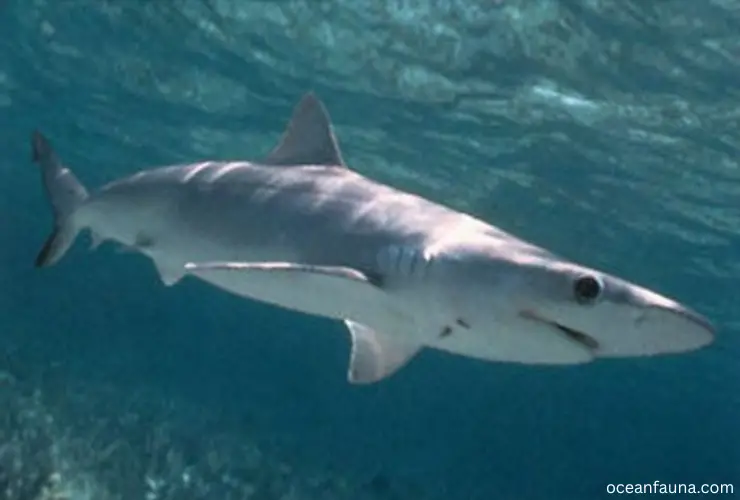
What Is the Conservation Status of Atlantic Sharpnose Shark?
The conservation status of the Atlantic Sharpnose Shark is currently listed as the Least Concern by the International Union for Conservation of Nature (IUCN). This means that the species is not facing any major threats to its existence, and populations are stable or increasing.
The IUCN also states that while there may be localized declines in population due to fishing activities, this has not been assessed on a global scale, and therefore the overall conservation status remains the Least Concern.
In addition, the IUCN notes that improvements in targeted fisheries management and laws protecting sharks from over-harvesting may help maintain healthy populations of Atlantic Sharpnose Sharks into the future.
Conclusion
Hopefully, you have a compact knowledge about the Atlantic sharpnose sharks, including their living, diet, reproduction, and conservation status. If you have any further queries about this shark species, let us know.

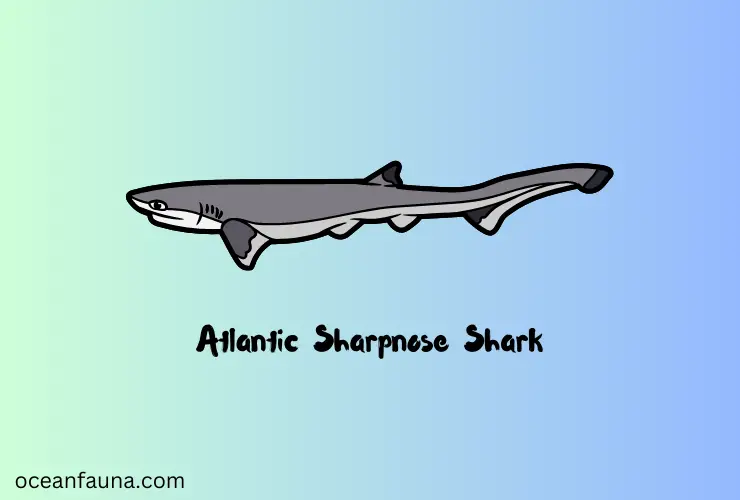
3 thoughts on “Atlantic Sharpnose Shark: Habitat, Diet, Anatomy & Fun Facts”